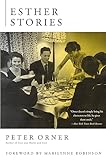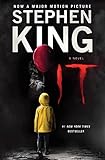Laura Adamczyk‘s stories are not for the faint of heart. Her stories involve sisters and estranged fathers and young men and women attempting to remake themselves, those “who commit to no life even [their] own,” there are lovers both potential and unrequited who are truckers and Lincoln scholars and La Quinta managers. They are filled with adults who are preoccupied with their own affairs or who aren’t to be trusted, and who fail or die regardless. Their children are forced into weighty situations and who, despite shared experiences, emerge with divergent memories and traumas.
Hardly Children‘s stories read as innocuous enough at first—yet as they unfurl this becomes questionable, ominous, the fissures become wider. These aren’t redemption narratives. Rather, they’re keenly observant and aware and unapologetic for this. Their narrators attempt to control their relationship to disappointment, to eke out a space and identity to call their own, however idiosyncratic. It’s as if entering American Gothic, you emerge from Saturn Devouring His Son. The stories in this volume have lingered with me long after most fictions do, haunting my psyche in unexpected ways. I spoke with Laura via email about her stories, their intricate structures, their ‘terrible characters,’ discomfort, and the new dirty real.
The Millions: With regard to writers, who are your idols, compatriots, agitators, influences? What short stories or collections do you return to again and again?
Laura Adamczyk: Édouard Levé, Lucia Berlin, Toni Morrison, Joy Williams, Diane Williams, Borges, early Michael Ondaatje. Denis Johnson’s short stories, Because They Wanted To and Bad Behavior by Mary Gaitskill, Esther Stories by Peter Orner. “The School” by Donald Barthelme, “Bullet in the Brain” by Tobias Wolff, “Where Are You Going, Where Have You Been?” by Joyce Carol Oates.
TM: I’ve recently been deeply immersed in the works of Ali Smith, and in her book Artful she remarks that short stories are about brevity and the shortness of life and in this way their sense of time is elastic, while novels are about continuance and attached to the trappings of their time. I’m curious to hear your thoughts on stories and time, especially with regard to the way your stories will make striking leaps in time and perspective that refract and shift the reader’s awareness of the central action.
LA: I think I agree with what Smith says, as hesitant as I may be to make any overarching pronouncements about what one can and cannot do in stories vs. novels. But because of their brevity, short stories do have more of a mandate to make sharp turns if an author wants to expand the scope with regards to time. There’s no expectation that a story will have as encompassing a blanket as a novel.
I can’t say these leaps in time are something I think about intentionally while first writing a story—say, as in “The Summer Father” or “Girls.” It’s much more associative to the story’s prevailing timeline, but once I realize what I’m doing, I make it more strategic. Jumping forward here and there, but not everywhere. It works better as an accent, I think. Equal parts past and present, or present and future, would make things too even. I don’t want so smooth a shape. It’s a nice little trick, really. It often seems like the freedom of writing novels is that anything at all can be included—it’s a freedom of excess. With stories, that anything-goes sense must happen more pointedly. I can make big moves in stories, but maybe only once, and quickly.
TM: Perhaps this is part two of the above: You and I have discussed writing short stories versus the endeavor of writing novels and as I recall you had some very smart things to say about the ways story writing differs from novel writing, especially when it comes to structure. Do you consider yourself an architect of your stories? Are you methodical in configuring them? And to what extent do urgency and abandon come into play?
LA: Form and structure take more control in some of my stories than others. It’s nice when that happens because structure can be something I struggle with. It’s a relief when I come upon something like the conceit for “Gun Control,” for instance. That was maybe one of the most fun stories in the collection to write, despite the subject matter. I did a lot of free associating, just writing down whatever as it came—the opposite of how I usually write. In that story, a pattern eventually emerged, and I went back and shaped it. But it’s often hard for me to get into so free, so playful of a space. For other stories, the form and structure feel a lot less intentional, like I’m stacking one thing on top of the other until it’s as tall as it needs to be but solid enough not to fall over. Sometimes it’s just like, Am I done? I think I’m done. But I’m always working under the mandate that the story should never be longer than necessary. Like reducing fractions—get it all the way down.
TM: Hardly Children is such an apt title for this collection. The title comes from a story about children who are becoming adults in a time when boys in the community are being murdered by bands of men—at first this premise seems a bit mythic (and reminiscent of Stephen King’s It) but then a protest scene becomes anchored as the list of dead boys’ names are called out. At that point the scene changes utterly, evoking the Black Lives Matter protests and the ever tragic and growing list of boys and young men killed by police. Children don’t find refuge in these stories—there’s always fear or terror or some unnamed unknowable danger or loss lurking just beyond and the adults have ambivalence towards children too. I’m curious to hear your thoughts about the children in these stories and what the title means to you.
LA: For me, the title points to two things: children thrown into adult situations, into peril, and often stunted adults acting in childish ways, in a manner that we might not consider fully adult. I think the ways these children and adults overlap has to do with language. There’s often a threat lurking, even if it’s as yet unknown. But neither the children nor the adults form language around their trauma or fears: the children because they are not yet able, and the adults because they’re too afraid to do so, because they’d rather ignore or bury those fears.
In the context of that story, “hardly children” is also a way to disparage those victimized, the same way young black victims of police violence or young (often) female victims of sexual violence, for instance, are made to seem older than they are, more dangerous, more adult, and therefore somehow deserving of their terrible fates. They’re hardly children, hardly angels. It’s an attempt by those in power to justify the horrible things they do to vulnerable individuals.
TM: Tolstoy’s adage, that “every unhappy family is unhappy in its own way” applies to your stories in the most delicious ways: the tensions and refuges of sisterhood, the experience of being a child captive within a family and its circumstances. The precision with which this dystopia is captured is unique—like in “The Summer Father,” where the middle daughter fleetingly feels joy and of wanting it “so bad but knowing it as something that will peak and then flow away.” Also, in that story, the youngest sister is consoled by sleeping with a tiny (and I imagine unwieldy) toy vacuum. What draws you to exploring the boredom, despair, hatred, affections, and airlessness even, of these circumstances?
LA: Most generally, I think what draws me to these circumstances is that family is not chosen. You have absolutely no control over who your parents are, who your siblings are, etc. Later in life, people can certainly seek out and create their own, separate families—friends, lovers, co-workers, political comrades, etc.—and can shed their biological families if they want to, but most of your childhood isn’t up to you; your family, for good and ill, isn’t your choice. It’s interesting to me to see how those people relate to each other over time, the way they can move closer together and further apart. More specifically, more personally, I’m drawn to such circumstances because, well, I’ve had those circumstances. I have two sisters with whom my relationship has transformed and shifted. And I have a lot of specific memories of and with them to draw from. Camping and bickering and dancing and talking and not talking, etc.
TM: The narrators of these stories are always onlookers, often grasping—through memory, interjection—to understand their circumstances and/ or claim their distance. Perhaps what I’m drawn to most is how your female protagonists are self-aware and uncomfortable and are utterly unapologetic for this. What role does discomfort have in your fiction, in these depictions of family, and is it a source of feminine strength?
LA: I once heard that those who can’t act observe. That might sound reductive, but it’s at least partially true for some of these characters. A lot of them either can’t act or don’t feel like they can, so they see, they notice. It’s adaptive, to become a sort of supreme noticer, and I believe there is a certain power, and yes, a feminine power, in that—to see and try to make sense of what you see. Because women are so often expected to be caretakers, to keep their distance, to let the discomfort lie, is a way of rejecting those expectations. But that’s also a generous way of seeing some of these characters. Many of them just can’t handle engaging more fully, so they seek out spaces of their own, which often tips them into isolation.
TM: Considered together, the stories in Hardly Children echo some kind of Dirty Realism—definitely the female and finer half (like Bobbie Ann Mason, Angela Carter, and Jayne Anne Phillips, who were included in Bill Buford’s genre-defining issue of Granta). In Buford’s intro he quotes Phillips to say their stories consider “how things fall apart and what is left when they do.” In this case perhaps Hardly Children is next-generation dirty—saucier, dirtier, and darker, not just witness to, but unafraid to protest? To what extent have the dirty realists shaped your thinking for or against the short story? I’d like to say these stories are also riddled with something like Lispector’s passion and Kristeva’s abjection. In what ways do you hope to break open the form?
LA: There are times when I can remember exactly what I was reading when I wrote something, but short of that I have a hard time either directly placing myself alongside or diverting from other writers. So frequently the challenge is just to get something down that means something to me and that might mean something to others. It’s hard to see yourself sometimes, you know? That having been said, I read a lot of those writers as I was coming up, and have absorbed that style to such an extent—I put a similar value on the dirt and the gunk, the specific detail—that it’s very much a part of me. It’s like a French cook trying to verbalize the influence Julia Child had on their food. For so many, she’s the standard. I told a friend I wish I could strip away specific memories and experiences so that I could view my work more objectively to see what I really think of it. But objectivity is impossible, especially if you’re the object.
TM: What lure does the Midwestern landscape hold for you?
LA: Even though it’s a cliché, I appreciate the blankness. I like the feeling of characters being left with only their terrible selves.














